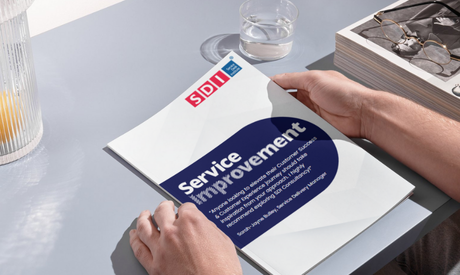Balancing Demands: Keeping Relationship Management Strategic (Without Losing Your Sanity!)
If you’re a relationship manager or IT business partner, you’ll know the drill: One minute you’re talking about digital strategy, the next you’re being asked why the Wi‑Fi has gone down in a distant office. You’re supposed to be the strategic bridge between business and technology, but somehow you end up as the unofficial help desk. Sound familiar? You’re not alone. Organisations across every industry are grappling with the same issue as digital transformation accelerates.
From our work with different clients, we’ve noticed a recurring theme: Teams are wearing all the hats – operational, tactical and strategic – at the same time. When headcount falls or the mandate isn’t crystal clear, the “bridge” suddenly turns into a juggling act. Tasks that should live with specialist teams land in the relationship manager’s lap. You find yourself booking network engineers, checking on docking stations and playing detective with missing cables instead of shaping the next transformation initiative.
Helpful? Absolutely. Sustainable? Hardly.
Being everyone’s “go‑to” can turn you into the friend everybody calls when their printer won’t print. Without triage or clear ownership, the function becomes the default escalation route for anything labelled “IT‑related,” regardless of its importance. Not only does that blur the boundaries of the role, it undermines your ability to drive the long‑term, value‑focused initiatives you were hired to lead. It’s a shortcut to burnout and a surefire way to miss out on real strategic wins.
That’s why role clarity matters. A relationship manager without a strategy or vision is like a GPS with no destination – everyone ends up lost. When there’s no dedicated strategy, vision or internal brand, people don’t understand why you’re there. Some stakeholders assume you’re an advisor, others see you as delivery support, and your inbox becomes a mix of project ideas and requests to reset passwords. Add informal communication and ad‑hoc decision‑making into the mix and confusion reigns. Clear operating models, with defined responsibilities and engagement paths, help separate tactical support from strategic partnership. They give you a framework to prioritise work, manage demand and articulate the value you deliver.
So how do you take back control?
Start by putting up a proper “shop sign.” Develop a strategy and value charter that set out your purpose, the outcomes you will drive and how success will be measured. Share it widely so colleagues know when and how to engage you and what you will – and won’t – do. Introduce governance and communication structures: portfolio boards, steering groups and documented decision‑making processes. When everyone knows who owns what and how decisions are made, conflicting messages disappear and you stop being the messenger for things you didn’t decide.
Next, embrace demand management. Not every cry for help needs your direct involvement. A lightweight intake process can filter low‑value, purely operational requests to the right support teams, freeing you up to focus on initiatives that actually move the needle. Think of it as a spam filter for your working life – your sanity will thank you.
Finally, invest in yourself and your team.
Soft skills such as negotiation and assertiveness are crucial, and saying “no” politely isn’t a four‑letter word. Consider splitting your function into tactical and strategic roles. Tactical relationship managers handle day‑to‑day engagement and make sure small issues don’t derail progress. Strategic partners focus on long‑term planning, value realisation and alignment with the organisation’s goals. This two‑tier model makes it clear who does what and stops you from becoming everything to everyone.
The challenges facing relationship‑management teams aren’t going away; they’re part and parcel of the digital age. Without role clarity, governance and demand management, even the most talented teams end up on a hamster wheel. But by setting a clear direction, filtering out the noise and supporting your people to work at the right level, you can get off the wheel and start steering the ship. That’s when true digital transformation and enablement begins.

Written by John Noctor, Chief Customer Success Officer, SDI.
More On John
Need support to regain focus and deliver real value?
At SDI, we understand the pressures IT leaders and Service Desk managers face – juggling day-to-day demands while trying to lead meaningful, long-term change. Our Service Improvement (Consultancy) Support is designed to cut through the noise. Whether you need to clarify roles, optimise processes, refocus your team on customer experience, or build a roadmap for strategic success, we’re here to guide you. Through tailored workshops and discovery projects, our expert consultants bring practical frameworks based on global best practice to helps you identify what’s holding you back and equip you to move forward with clarity and confidence.
If you’re ready to stop firefighting and start building the high-impact service your business deserves, let’s talk. Use the form below to get in touch and let’s discuss the best options for you.















